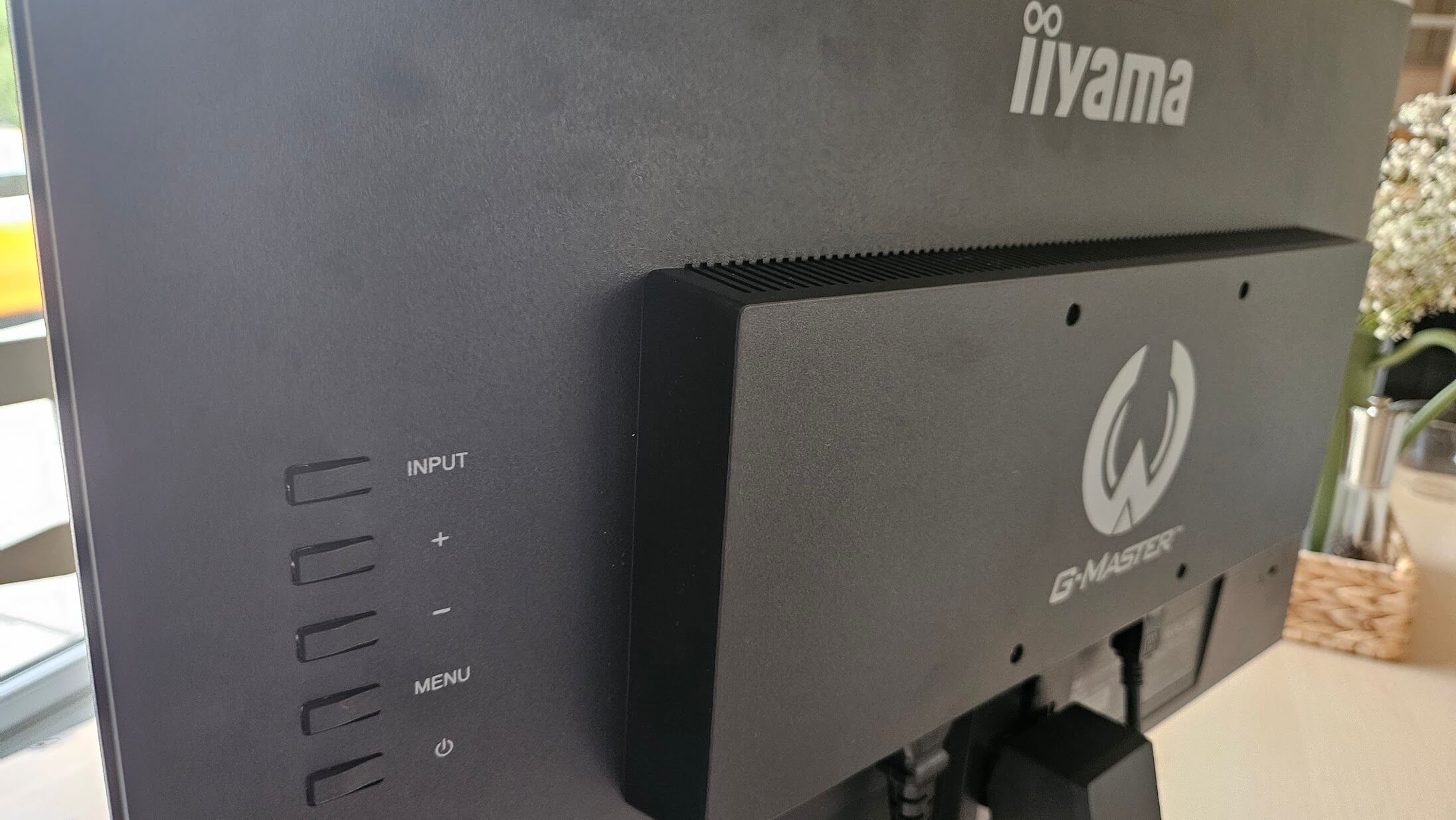
I’ve spent the past week or so using the G-Master G2470HSU monitor to see how it stacks up. This is a monitor aimed at the gaming crowd, offering up a lightning-fast, 165Hz IPS panel. Join me below as I take a look at what Iiyama has delivered with this display from their Red Eagle line.
Baby, Don’t (165) Hertz Me

What’s In The Box?
First of all, let’s talk about what you’re getting when you unpack the G-Master G2470HSU. You get the monitor – handy – and stand along with both HDMI and Display Port cables, a USB A to USB B cable, documentation, and the power supply. It’s been over a year since I bought a monitor, but I don’t remember getting both kinds of cable included when I did, so this is a nice touch from Iiyama. All the cables supplied are 1.8m long. Whilst the monitor I am reviewing here is the 24″ 1080p version, the Red Eagle G-Master B1 70 series also comes in 27″ 1080p and 27″ 1440p.
Let’s Get Physical
The G-Master G2470HSU comes with some handy physical features to help you customise the viewing experience to your preference.
Physically, the provided monitor stand allows for some backward and forward tilt (21.5° up; 3.5° down). This allows you to to adjust the screen to help avoid glare and improve posture while using it in your desk setup. A cable management clip is also built-in to the back of the stand, so make sure you keep those cables tidy. The monitor also has standard VESA FDMI MIS-D 100mm x 100mm mount holes on the back allowing for connection of a separate arm if required.

As alluded to above, both a HDMI (v1.4 1920×1080 144Hz) and Display Port (v1.2 1920×1080 165Hz) are provided for connecting your devices. The I/O panel also includes a 3.5mm jack for external audio devices and a USB-B port to redirect input from 2 USB-A (v.2.0 DC5V, 500mA) ports on the side of the monitor. There are built-in speakers, but don’t expect these to blow you away at just 5w each. In fairness, it’s been a while since I’ve had a monitor with any built-in audio output. It was handy to not have to scramble about to find a pair of USB speakers with a connection I could use in a pinch.
Buttons for power, menu and settings adjustment are provided on the back of the monitor on the right-hand side. I personally prefer buttons along the bottom of the monitor, for easier access, though I didn’t have any real trouble using the ones provided. If I was left-handed, however, I imagine I would have struggled.

Software
Let’s move on to the digital features. Iiyama has included several options for users to tinker with to alter the display output on the G-Master G2470HSU. The Black Tuner in particular proved to be useful during the day as the natural light in my office changes. I was able to adjust this setting to compensate and allow for comfortable viewing. There is also a Blue Light reduction option with 3 different settings for those of you concerned with your vision.
For the gamers out there, Freesync Premium is included to allow for variable framerate synchronisation, and the monitor comes with some pre-set options for FPS, Strategy and Sports games. I didn’t get to use these pre-sets for the specific game types, so can’t speak to their benefits for each. However, I did find that for a high-intensity action game (FFXVI on PS5) I found having much of the post-processing options off on the monitor gave me the best results.

Performance
The ultimate selling point for the G-Master G2470HSU is arguably the refresh rate, so how does it hold up? After running some tests using UFO Test I can confirm that it performs well at high speeds. According to those tests, using the Display Port, the monitor was able to cope at 165FPS with no noticeable stuttering. Similarly, with the HDMI cable, the tests ran at 120FPS with no issues.

In terms of colours, at times, they felt a little flat. I’m sure that with some further configuration in the settings on both the monitor and source device, you’d be able to coax out a better performance. It’s worth noting that when using the monitor with my PC, the colour display was good, the noticeable difference was with my PS5 whilst playing titles with darker scenes. It’s definitely worth pointing out that I am used to playing on an OLED screen rather than an LCD, so it’s not the fairest comparison.
Final Thoughts
There’s no doubt that for the asking price of between £110-140 that you can find this monitor on sale for, you’re going to get value for money. This is especially true if you’re looking for a competitive edge in games where a high FPS is crucial. This is a sleek unit, which will look great on your battle station and is not going to break the bank in the process.
With all that being said, the G-Master G2470HSU receives a Thumb Culture Silver Award.

Disclaimer: Samples were received in order to write this review.

YouTube | Facebook | Twitter | Instagram | Discord | Podcast
